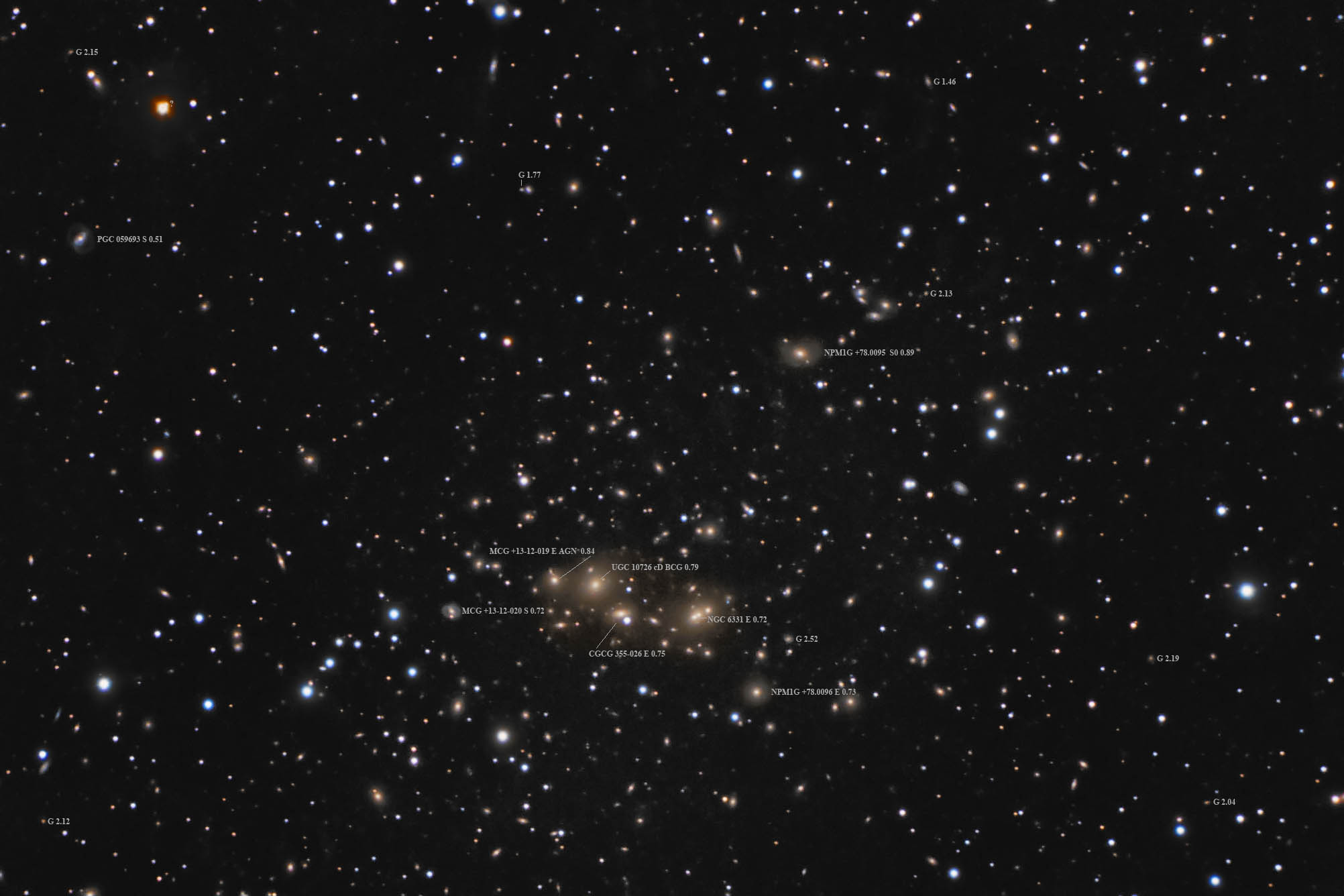| Description | Images |
Object name: ABELL2256Designation(s): ABELL2256, NGC6331, UGC10726, The Abell Galaxy cluster #2256 is the Abell cluster closest to the celestial pole at a declination of 78 degrees 43 minutes. I expect that is what drew it to my attention, that and it is a rather rich cluster. It is located east of the bowl of the Little Dipper, Ursa Minor. NED lists its redshift distant as about 770 million light-years and gives it a diameter of 140 minutes, far larger than my field of view which is centered on the core region. The cluster is listed as having 86 members and being class II-III using the BM classification system. Class BM II means it has several bright galaxies that are between cD and gE classification and BM III has no dominant galaxy. In this case it has many scattered galaxies meeting the BM II classification but they don't really define a core region. Related Designation(s):2MASS J17033580+7837438, 2MASS J17042716+7838257, 2MASX J17033591+7837435, 2MASX J17042724+7838260, 2PBC J1704.0+7836, 2XMM J170426.2+783827, ABELL 2256, ABELL 2256:[AAV2011] BCG, ABELL 2256:[BLC2002] 0428, ABELL 2256:[BLC2002] 0581, ABELL 2256:[BS90] 01, ABELL 2256:[BS90] 48-2, ABELL 2256:[CAE99] a, ABELL 2256:[CAE99] d, ABELL 2256:[D76] 259, ABELL 2256:[D76] 323, ABELL 2256:[D80] 039, ABELL 2256:[D80] 046, ABELL 2256:[FD77] A, ABELL 2256:[FD77] D, ABELL 2256:[FKK89] 083, ABELL 2256:[FKK89] 095, ABELL 2256:[LO95] C21, ABELL 2256:[RBP2007] M, ABELL 2256:[SDG94] B, ABELL 2256:[ZAC2011] BCG, ABELL2256, CGCG 1706.3+7842 NED02, CGCG 1707.2+7843, CGCG 355-024 NED02, CGCG 355-027, GALEX J170427.0+783826, GALEXASC J170427.02+783826.1 , LEDA 084830, MAXI J1703+785, MCG +13-12-015 NED02, MCG +13-12-018, NFP J170427.2+783825, NGC 6331, NGC6331, NPM1G +78.0097, NSA 167203, PLCKESZ G110.98+31.73, PSZ1 G110.99+31.74 BCG, SCL 168 NED02, SDSS J170427.18+783824.6, UGC 10726, UGC10726, UGCl 411, UZC J170335.0+783747, UZC J170427.2+783825, WBL 632-001, WBL 632-003, WINGS J170335.96+783744.3, WINGS J170335.97+783744.4, WINGS J170427.22+783825.4, WINGS J170427.23+783825.4, XSS J17050+7838, ZwCl 1653.9+7856, [PMP2006] J170427.3+783825.1 , |

